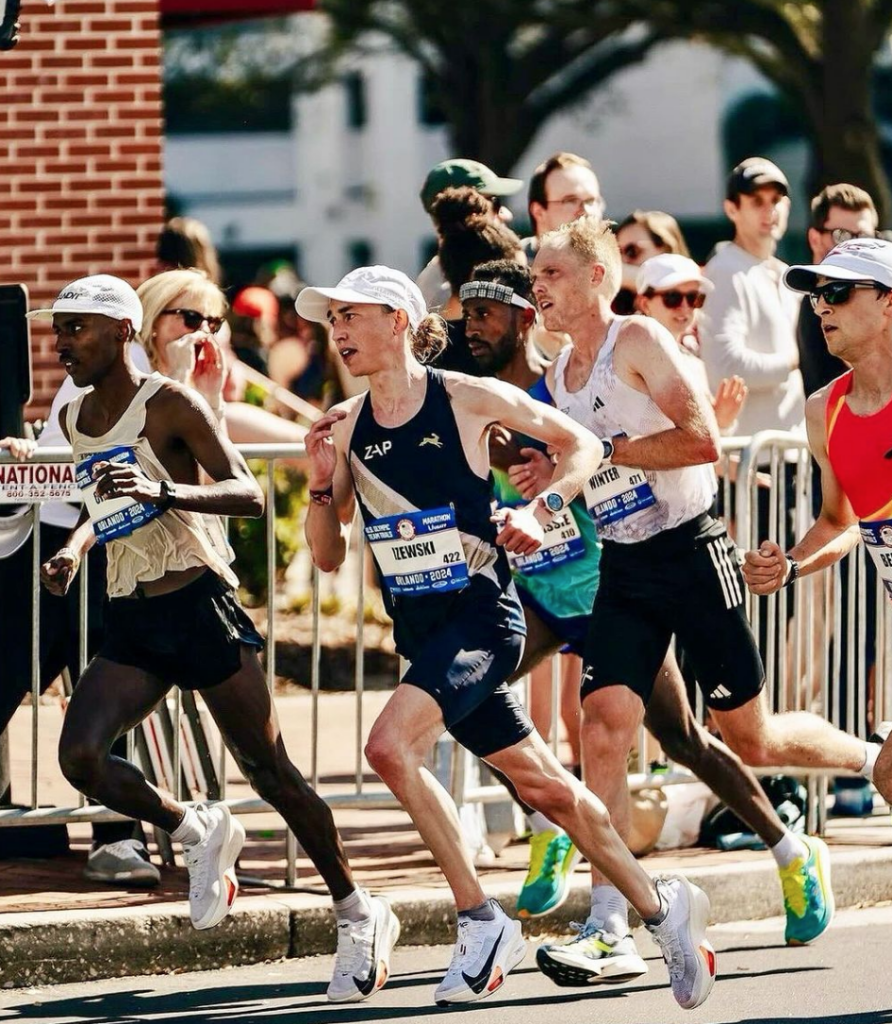Workouts for Runners You Are Likely Not Doing But Should Be
#1 Tempo into Shorter Accelerations
Tempo runs aka anaerobic threshold stimulus sessions are one of the most common workouts for runners. Be it a sustained 4k – 12k moderate run at approximately 84-88% of an athlete’s max HR or even longer intervals at a moderate (10-15 sec slower than 10k fitness) effort with shorter recovery (ex. 4-7 x 1 mile repeats with 1:30-2:00 rest), these strength building sessions are instrumental in the ability to maintain sustained rhythms on race day. As a twist utilized by too few, I recommend the following addition to your normal tempo routine: toss in 6 or 7 “long strides” of approx 300m at your current mile pace. (Or as a guesstimation take 15-25 sec/mile off your current 5k pace).
These “economy” accelerations will not only improve biomechanical efficiency but physiological efficiency as well. Blend this session in once per 15-20 days in your pre-competition window and you’ll find yourself closing races more effectively.

#2 Long Hills
Hill Repetitions are nothing new. Generations of athletes prepping for races from the mile to the marathon have long used “nature’s weight work” — to what Arthur Lydiard common referred hills — as an integral part of every training block. However, most athletes utilize hills in a shorter format, typically intervals 150m – 400m in length.
As a small but highly effective tweak to your summer and fall training this year I’d like to suggest a different type of hill, the “long sustained”. Unlike power based shorter hills, longer sustained hills between 10:00 and 40:00 in duration (yes you read that correctly) are an outstanding method of working on mechanical power output, overall prime mover (glutes, soles, plantar) engagement in a setting which as well can and will improve anaerobic threshold as effectively as any traditional tempo run (without the same degree of pounding).
This type of hill is tough to find. Few locations possess sustained hills 2-7 miles in length. In the absence of such a venue I recommend this run on a quality treadmill set between 2.5-4% uphill grade. (Or join us here in the Blue Ridge Mountains for a Running Vacation this September!)
#3 Tempo 400s
Of all the workouts for runners in our training arsenal, the one which we at ZAP believe is the most highly underused is the “tempo 400” session for 10k prep. Tempo or “rhythm” 400s are designed ostensibly for 2 purposes. First, for the psychosomatic connection of muscle memory. (A.k.a. firing patterns for a specific race tempo.)
Secondly, like so many other workouts for runners, as a unique way of broadening aerobic strength. As you work your way through your next 12-16 week training block, try the following session to spice up your traditional sequence.
After warming up with a forward stride / acceleration sequence, run (minimum 7-9, and as many as 20-25) a series of 400s at your approximate 10k rhythm with relatively short (only 1:00-1:30) walking or slow jog between them. For those doing a larger volume of these 400s try breaking them into 2 sets of 10-12 400s with a longer set break after the first dozen. What’s the real key to this session? NOT RUNNING the 400s TOO HARD! …..a common mistake. The key with this session is feeling the rhythm of your targeted 10k Tempo, not finishing this session with hands round your ankles.

#4 Surges in Your Long Run
Research shows the average person needs to hear a message 7 times before they take action. This session has been discussed by the ZAP staff ad nauseam over the years. However, we believe it’s worth revisiting (and we’ll likely come back to it in the near future). This message/ recommendation is that effective and important. Within your week’s longest run, in all weeks minus race weeks, try throwing in simple moderate surges every 7-10 minutes.
For more experienced runners sprinkle in a variety of pickup durations perhaps 1:00, 2:00, 3:00 x 2-3 sets and for those who have never tried this a moderate 1:00 surge every 8-10 minutes will suffice. These “Squires Surges” are an outstanding way of teaching the body to handle bad patches mid race, changes in rhythm and topography during race efforts, and even (thanks to a lengthy study by Dr Jack Daniels in 2004) engage fast twitch fiber amidst fatigued slow twitch fiber late in longer runs. In the simplest of terms, depart from the masses who run the majority of long runs at the same pace start to finish.